Food vendors push about Yatai, which are two-wheeled wooden food carts. Between patrons and sellers, there is usually a bar or barrier. Fixed structures with a few chairs to sit for your meals can be found in most yatai.
Although there aren’t as many yatai as they once were, they may still be found at festivals, as well as on pathways and streets all across Japan.
Continue reading to learn more about Yatai carts in Japan, including what they are, where to find them, as well as some must-try Yatai meals to incorporate into your trip to Japan.
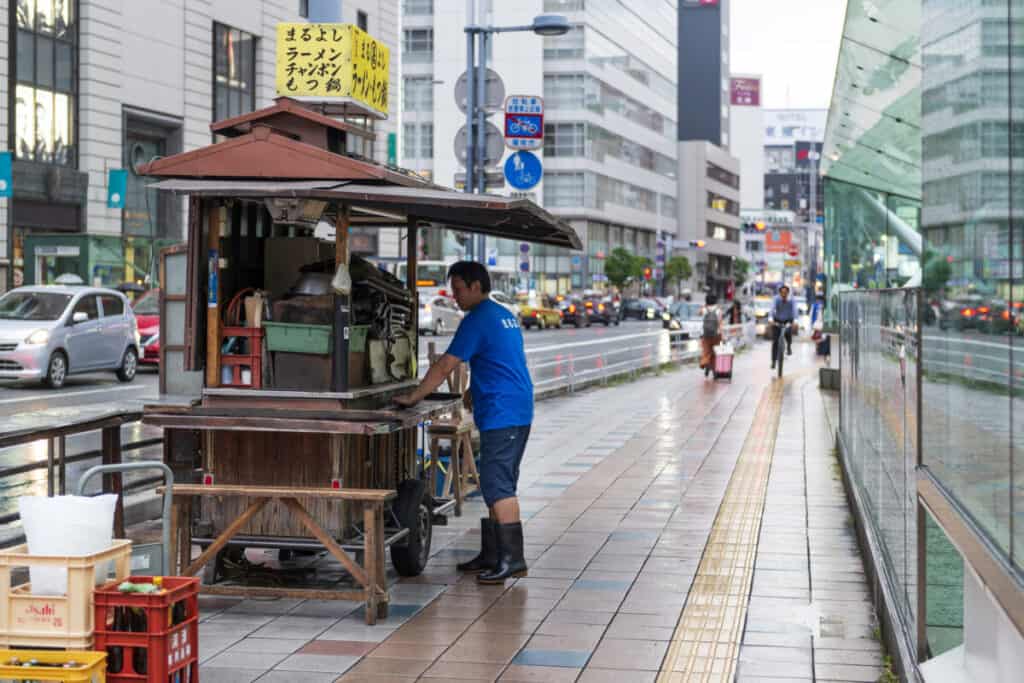
The History Behind Japanese Yatai
Japan’s movable food kiosks, known as Yatai, have operated since the Edo period. Yatai served a 17th-century version of fast food, with afternoon and evening meals available on the go.
Yatai were frequent around shrines and temples, and they were renowned for offering buckwheat soba noodles.
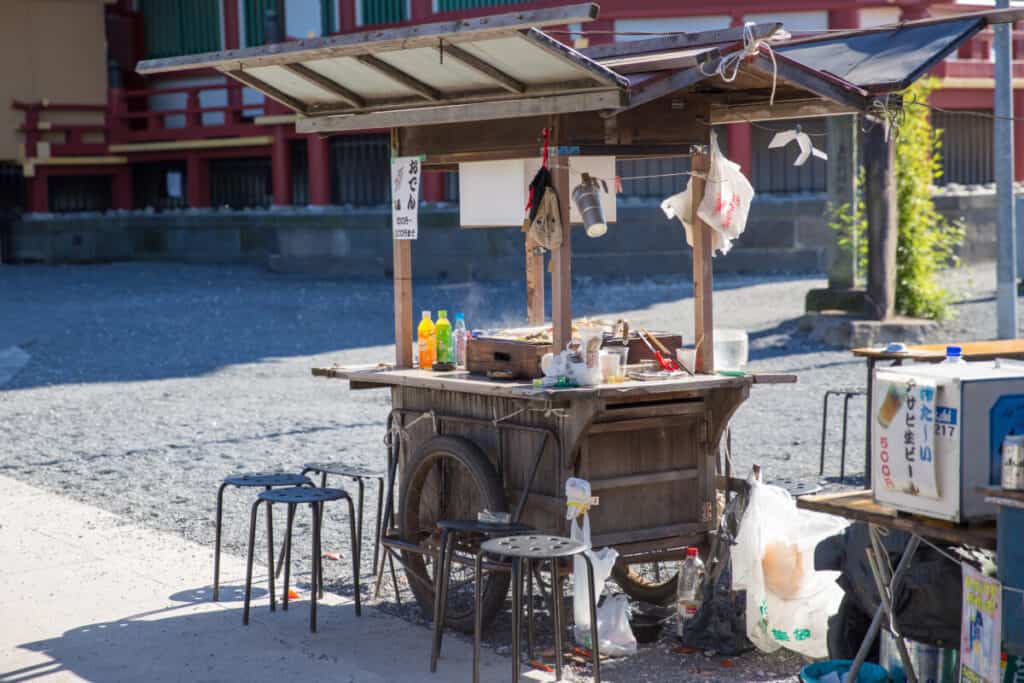
After a period of decline due to more strict rules, yatai had a revival in the 1900s due to a wave of industrialization and urbanization. In the 1950s, the availability of “ready-made” yatai carts led to renewed popularity.
Yatai spawned regional cuisine, sustaining the popularity of a variety of traditional Japanese snacks and entrees.
What Is a Yatai?
In Japan, a yatai is a small, mobile food booth that sells ramen and other foods. The name means “shop stand” in English. The booth is set up on pedestrian pathways in the early evening and dismantled late at night or early in the morning.
Though the tradition of mobile food booths dates back to the 17th century, yatai, or two-wheeled wooden pushcarts, were highly prevalent during the Meiji period.
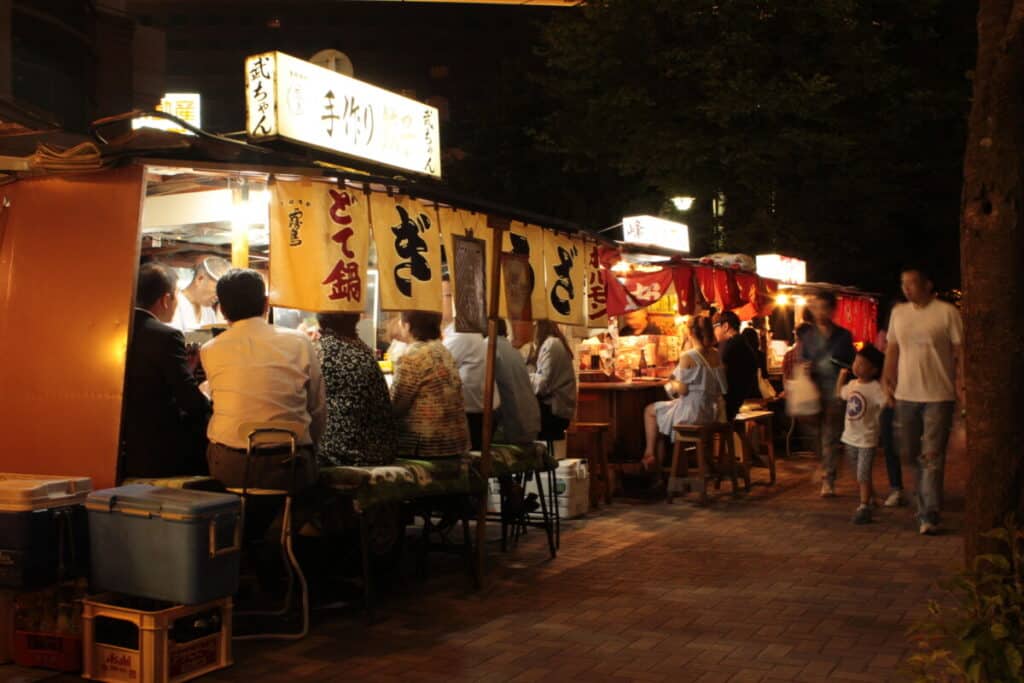
Yatai were popular during and after WWII, but before the 1964 Tokyo Olympics, Japanese authorities implemented limitations claiming health concerns.
They are still common in Fukuoka today, although their numbers are dwindling.
What Does a Traditional Yatai Look Like?
As a Westerner, it’s difficult to fathom what a Japanese yatai looks like. You’re probably thinking of the iconic hot dog stand in big American cities when you think about these food stalls.
A yatai has two wheels and is moved from location to location by the food vendor. Previously, the carts were relatively movable and frequently carried about, but nowadays, many sellers linger on Fukuoka’s busy streets to attract hungry consumers.
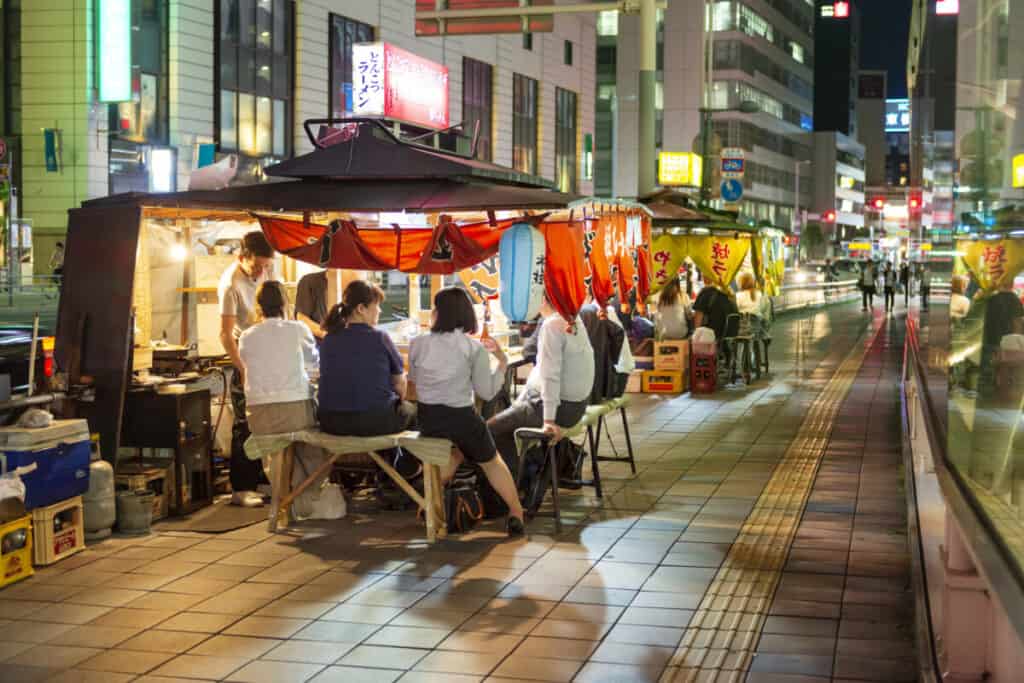
The guests of the yatai stand are separated from the vendor who makes and serves the cuisine. Most of today’s yatai include a tiny bar-like setting with a table and a few stools.
Wheels, cooking equipment, cookware, and eating utensils will all be included at a yatai stand.
The chairs and tables are folded inside the cart while the yatai is moved to its next destination. The carts are fairly sized, measuring between 8 and 10 feet in length.
Patrons may sit around the table and eat and drink, which is why this sort of street food stall is so popular since you can grab a fast meal to eat at any time of day and late into the evening.
What Kind of Food Does a Yatai Serve?
Traditional Japanese cuisine is generally served from yatai, while contemporary variations are also available. Beverages such as Japanese beer and sake are frequently available. The following are some of the most common dishes sold at a yatai.
Dango Served Fresh from a Yatai
Dango, sweet or savory rice dumplings eaten on skewers, similar to mochi, is also sold from yatai. Dango may be consumed all year, although distinct tastes correspond to the four seasons.
This dish comes in various flavors, the most frequent of which is sweet and may include a variety of seasonal ingredients.
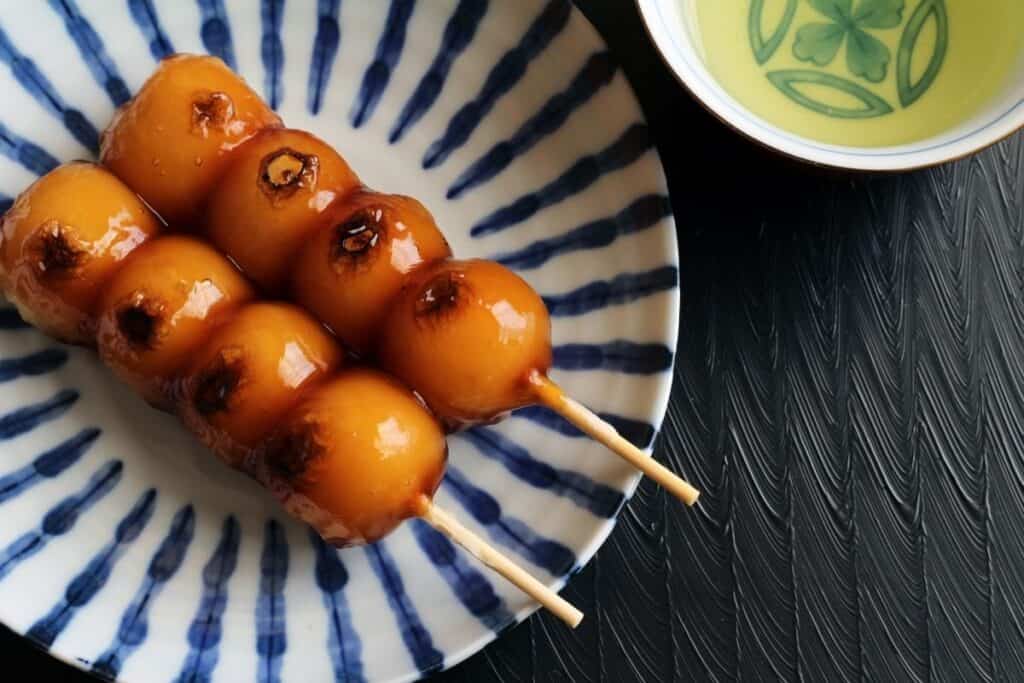
Gyozas Served Fresh from a Yatai
Gyoza are dumplings made with ground pork and nira, a Japanese chive, as well as garlic, ginger, and cabbage.
Gyoza is commonly served with dipping sauces made from soy sauce and vinegar and can be eaten steamed, pan-fried, or boiled.
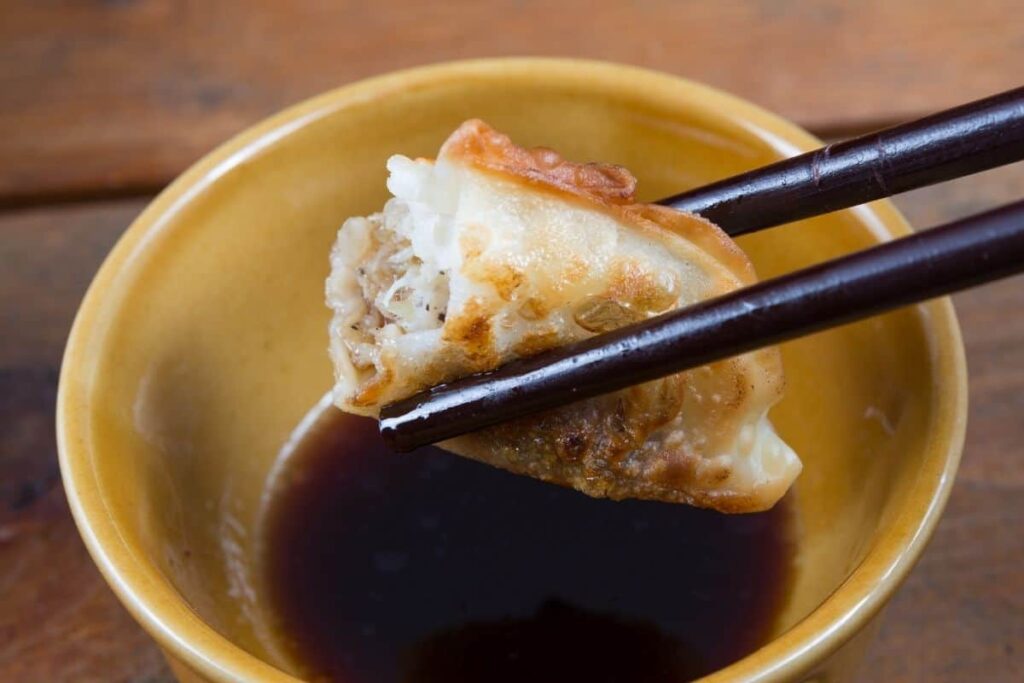
Kabayaki Served Fresh from a Yatai
Eel, or “unagi,” is broiled or grilled in kabayaki. The eel is chopped into thin slices before being seasoned with a soy sauce and mirin combination. Kabayaki is delicious on its own, but it’s also delicious with rice.
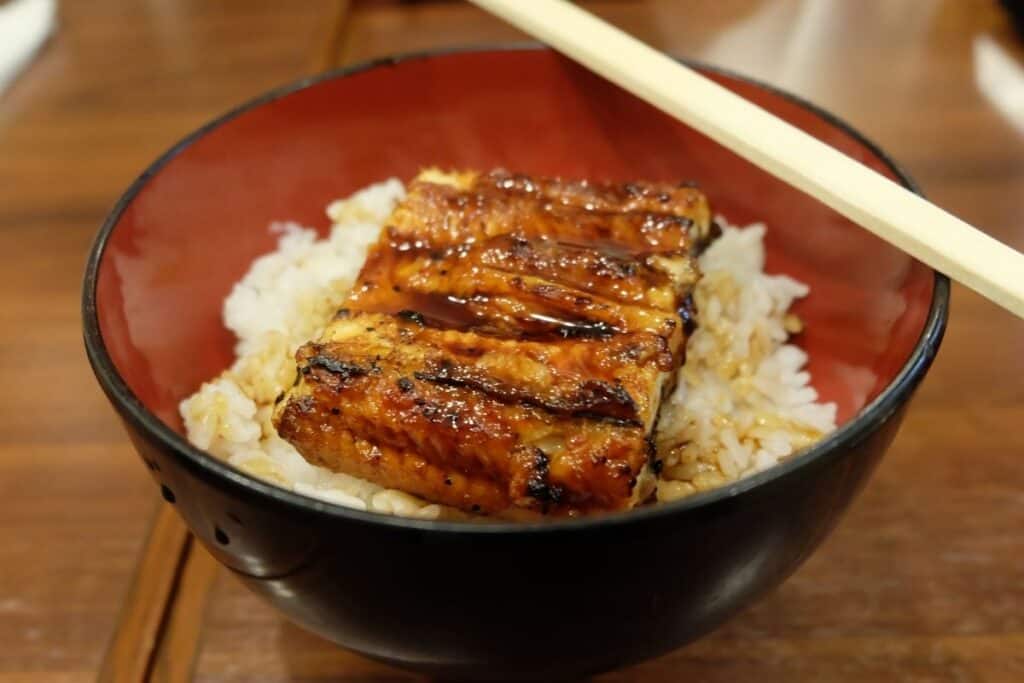
Yakitori Served Fresh from a Yatai
Yakitori, or chicken skewers grilled on a Japanese grill or griddle, is probably the most popular Yatai dish.
Yakitori is a popular and traditional chicken meal served on bamboo skewers with yakitori sauce, which is found to be both sweet and flavorful.
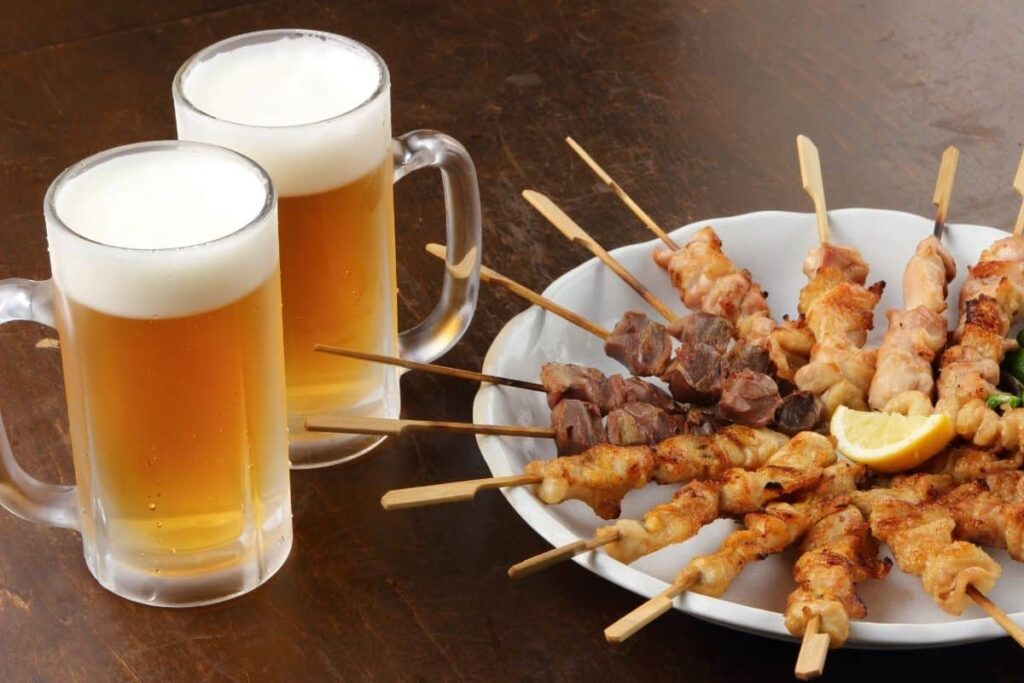
Sushi Served Fresh from a Yatai
Seafood has long been a popular ingredient in Japanese cuisine. The form of hand-pressed sushi known as “nigirizushi,” still popular today, is derived from yatai from the Edo era.
Sashimi and rice were squished together to produce a fast supper on the road. While only halibut, eel, tuna, and shellfish were employed initially, a wide variety of fish is now used, but mostly at established businesses.
Sushi served fresh from a yatai is an excellent way to experience traditional Japanese cuisine with an exciting culinary adventure.
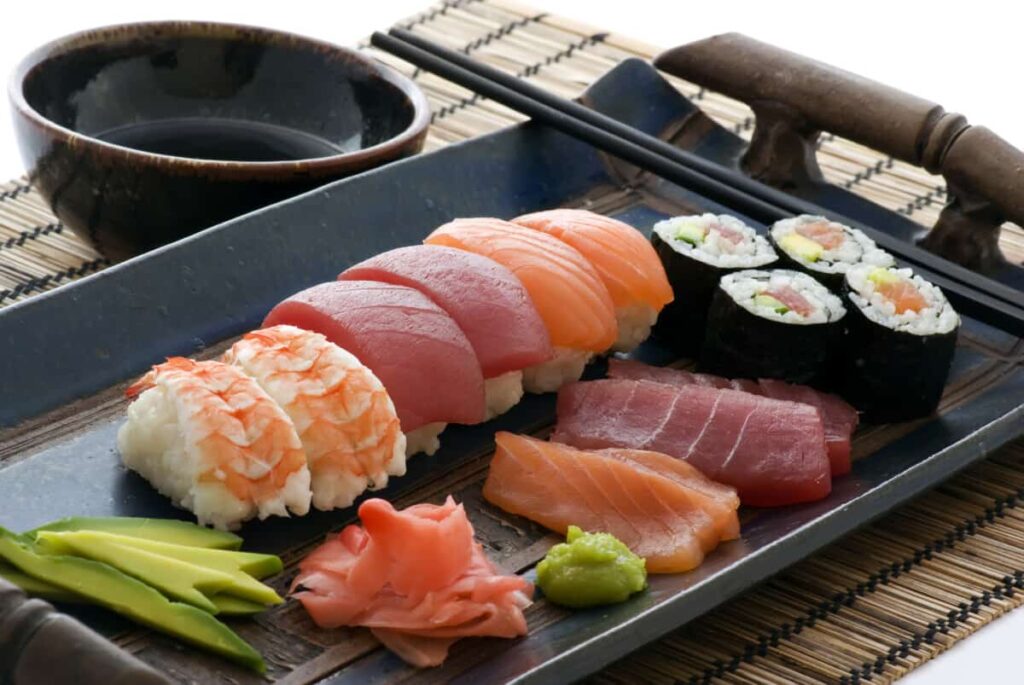
Ramen Served Fresh from a Yatai
Ramen is a famous Japanese street cuisine that can be found at both street stalls and yatai all over Japan. Ramen is a popular noodle soup with long, thin “pulled” noodles.
The noodles are served in a delicious broth that is heated.
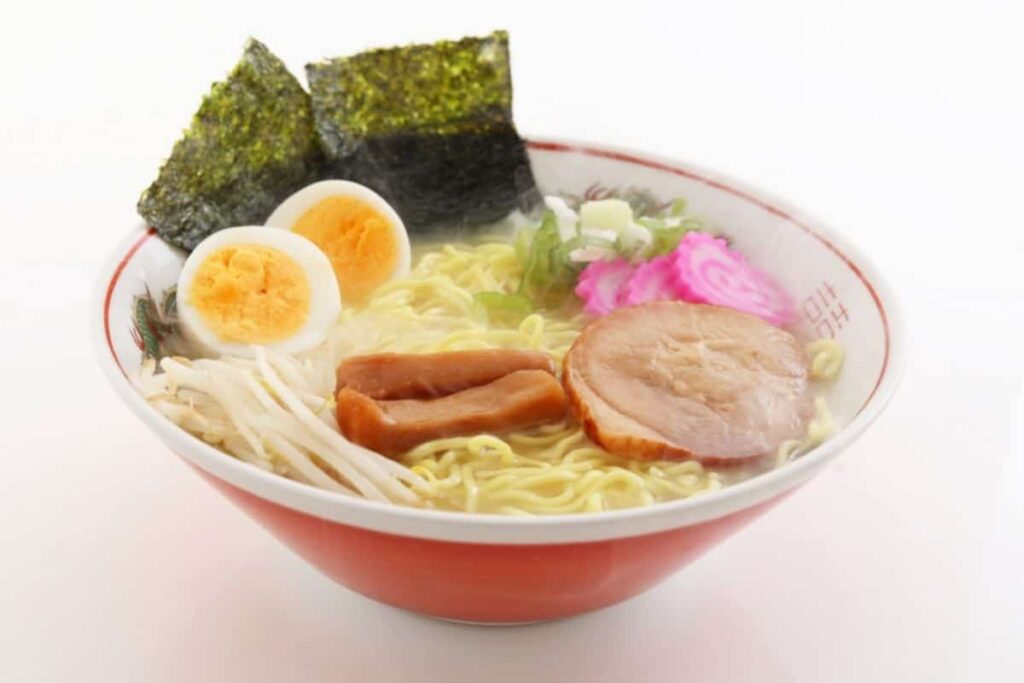
Chicken, pig, beef, or seafood can all be used to make the broth. This stock serves as the foundation for the soup, which is then topped with chewy noodles, sliced meat, veggies, and a variety of other delectable ingredients.
The miso paste flavor of ramen soup is wonderful, and it may also be served with little fishcakes (naruto).
Oden Served Fresh from a Yatai
Boiling eggs, cabbage, daikon, fishcakes, and tofu are all cooked together in Oden, a hotpot meal. Oden is a “homestyle” comfort dish that can be prepared over a long period, making it popular among yatai merchants.
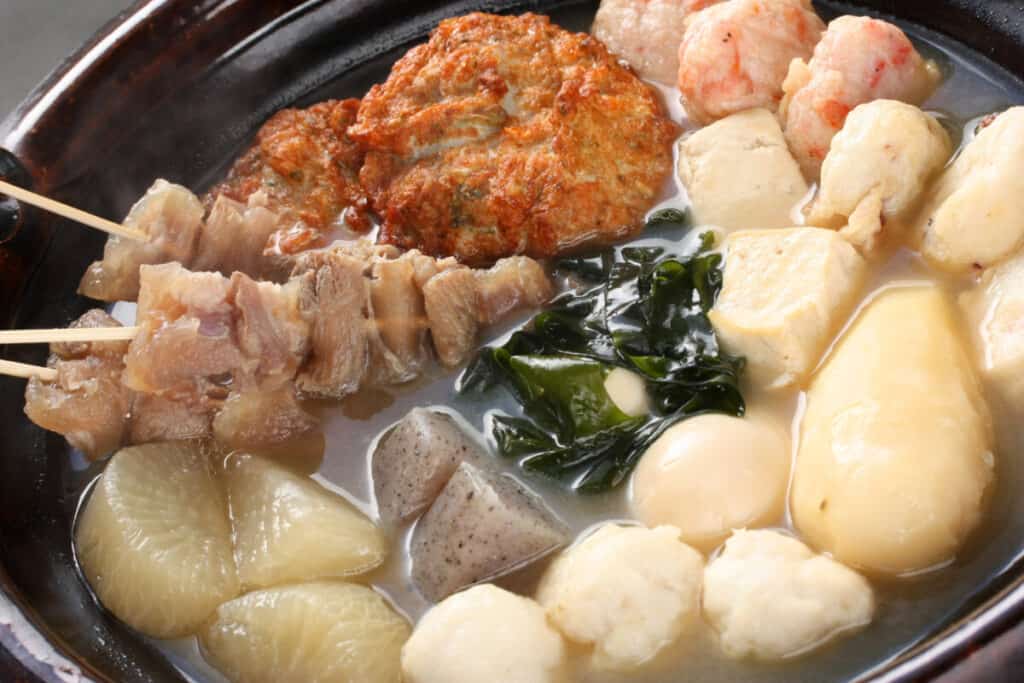
Okonomiyaki Served Fresh from a Yatai
Okonomiyaki is a popular Japanese runny pancake prepared on a yatai teppanyaki grill. The savory pancake is formed with a batter baked with cabbage and meat on a griddle.
It’s then topped with aonori, bonito flakes, pickled ginger, and Kewpie Japanese mayonnaise, as well as a delectable okonomiyaki sauce.
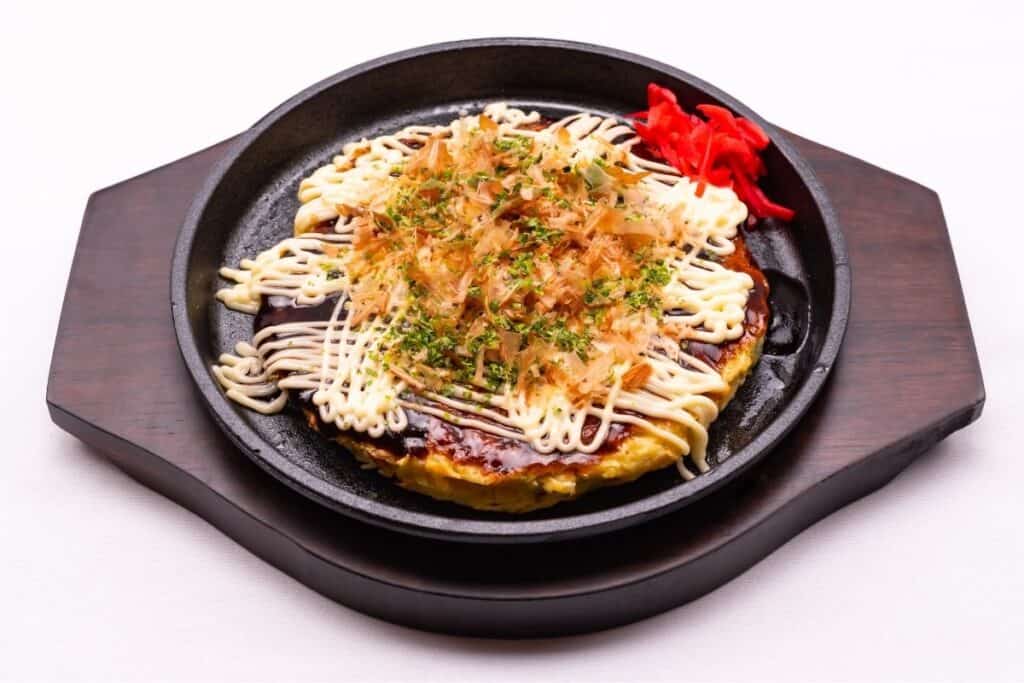
Tempura Served Fresh from a Yatai
Tempura crisps up beautifully when fried and may be dipped in a sauce made with shredded daikon radish.
Many things can be found fried in tempura in Japan, including fish and vegetables. Tempura could not be created in Edo’s wood and paper buildings due to the probable fire threat involved with frying, making it ideal for food stands and yatai on the streets of old Edo.
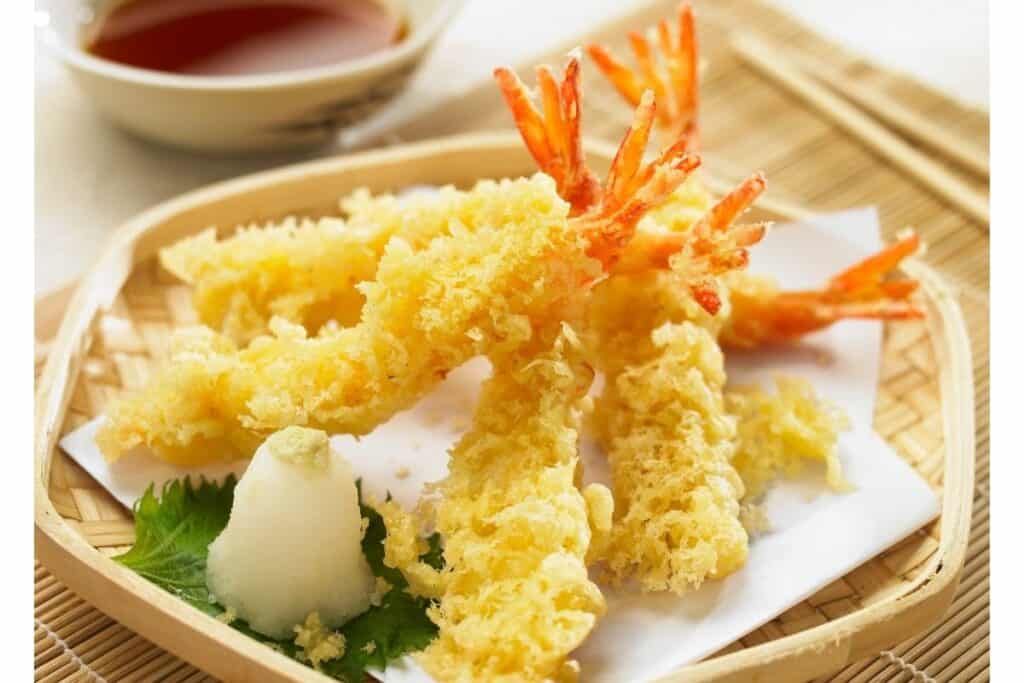
Takoyaki Served Fresh from a Yatai
One of the most popular meals at yatai is the world-famous takoyaki or octopus balls. You can’t claim to have had Japanese street cuisine unless you’ve tried fried octopus balls.
Octopus is diced or minced and deep-fried in an umami batter before serving with a takoyaki sauce.
Takoyaki is a festival food as well as a street snack, making it a must-try if you’re visiting Japan.
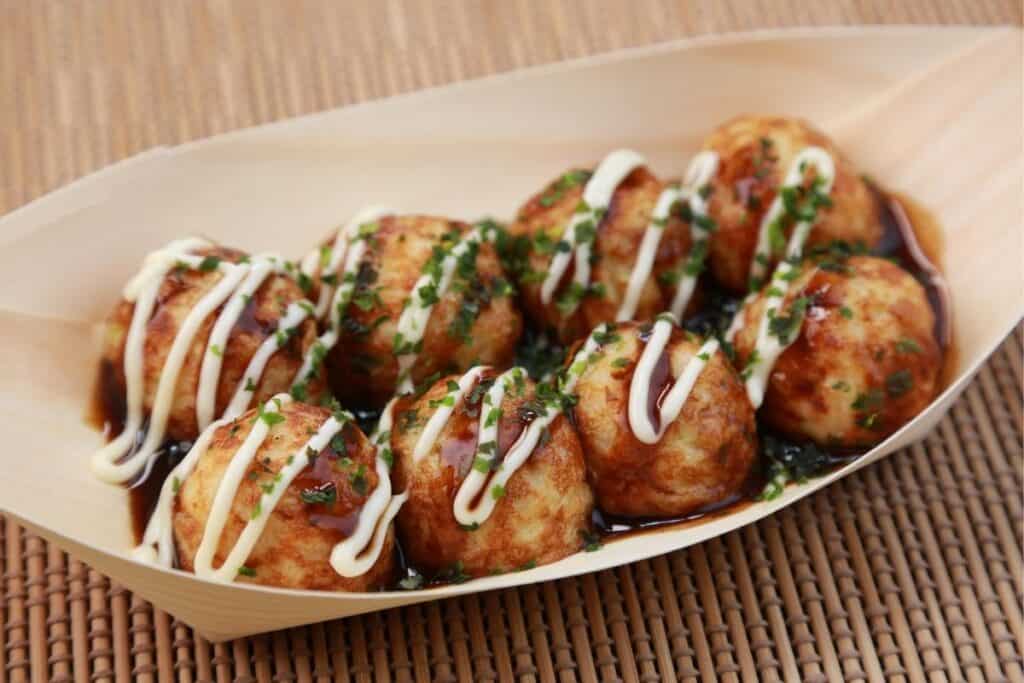
Where in Japan Can You Find Yatai Stalls?
Food booths and yatai have become particularly popular in Fukuoka City and festivals. Omoide Yokochou, Ameyoko, and Nakamise Dori are more particular areas.
Omoide Yokochou, often known as “Memory Lane,” is a small Shinjuku Street. These booths aren’t easily transportable, but they serve excellent cuisine, nevertheless.
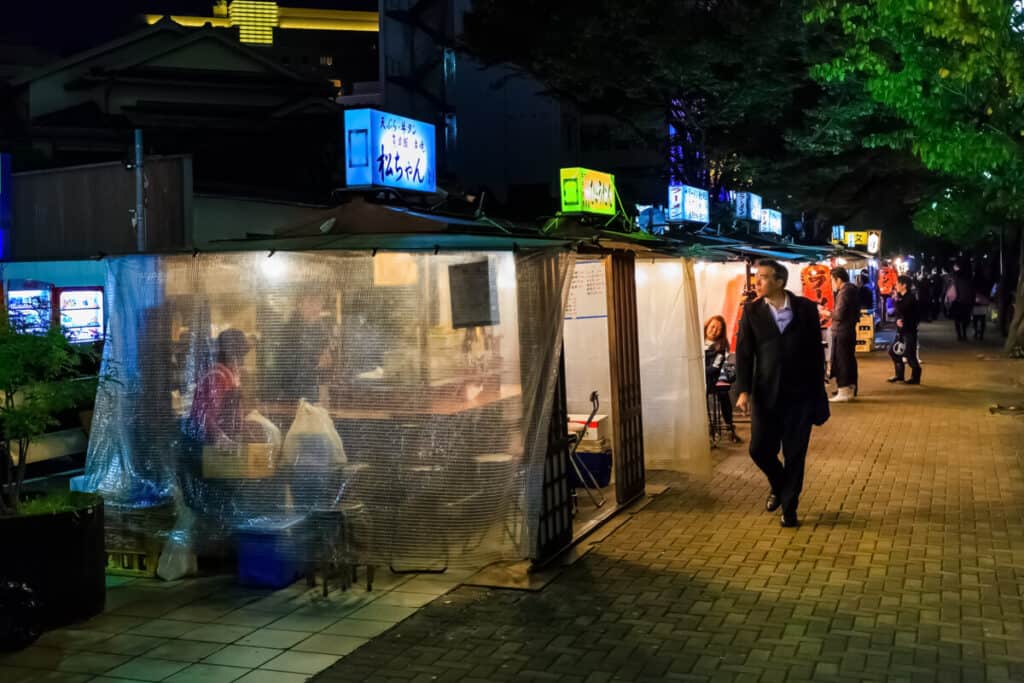
Then there’s Ameyoko, a shopping street featuring a mix of yatai. The yatai on this Ueno-area Street, unlike others, are open during the day and nighttime.
Nakamise Dori’s yatai is also a great yatai to visit as they sell excellent Japanese goods and snacks.
When Are Yatai Open in Japan?
Yatai’s are usually open from 6 p.m. until 2 a.m. unless there is bad weather. On one day of the week, several stands are closed. The day of closing varies with every stand. However, they are usually closed on Sunday. Popular stands might have long lines, especially on Fridays and Saturdays.
What is the Best Way to Get to a Yatai?
Yatai may be found all around the city center, and travelers are likely to come across them while strolling through crowded tourist locations late at night.
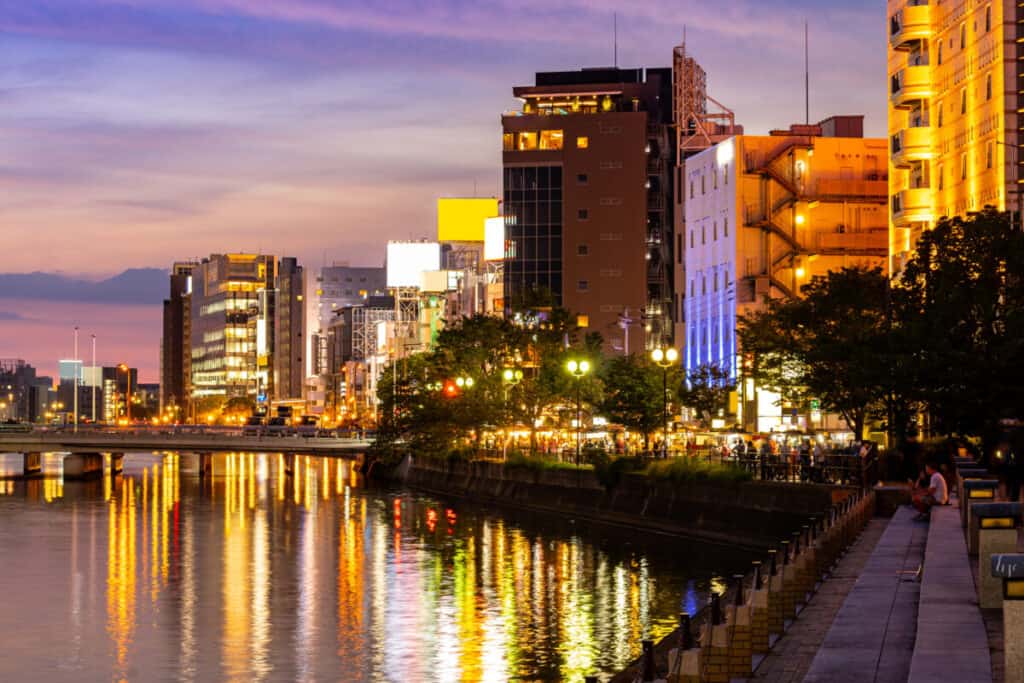
Travelers may use the handy 100-yen loop bus from Hakata Station or Tenjin Station to reach the row of booths on Nakasu Island.
Nakasu Kawabata Station and Minami Tenjin Station are the closest metro stations, which are both approximately 10-minute away.










